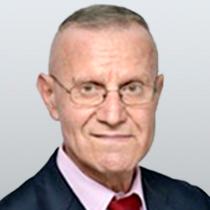“The purpose of this paper is to demonstrate possibilities and clarify thinking, rather than to be realistic .... In this model individuals are identical and live forever, so that there are no realistic complications involving distribution within or between generations; output is simply given.”
“A theory is a set of abstract principles purporting to be either a correct description of reality or a set of guidelines for man’s actions. Correspondence to reality is the standard of value by which one estimates a theory. If a theory is inapplicable to reality, by what standard can it be estimated as ‘good’?”
“A concept is a mental integration of two or more units which are isolated according to a specific characteristic(s) and united by a specific definition.
“The units involved may be any aspect of reality: ...”
“The relevant question to ask about the assumptions of a theory is not whether they are descriptively realistic, for they never are, but whether they are sufficiently good approximation for the purpose in hand. And this question can be answered only by seeing whether the theory works, which means whether it yields sufficiently accurate predictions.”
In Friedman’s thinking, our knowledge of the world of economics is elusive. Since it is not possible to establish “how things really work,” then it does not really matter what the assumptions of a theory are. In fact, anything goes, as long as the theory can generate accurate predictions. But is predictive capability a valid criterion for accepting a theory?
“Economics can predict the effects to be expected from resorting to definite measures of economic policies. It can answer the question whether a definite policy is able to attain the ends aimed at and, if the answer is in the negative, what its real effects will be. But, of course, this prediction can be only ‘qualitative.’”
“What we can ‘observe’ is always only complex phenomena. What economic history, observation, or experience can tell us is facts like these: Over a definite period of the past the miner John in the coal mines of the X company in the village of Y earned p dollars for a working day of n hours. There is no way that would lead from the assemblage of such and similar data to any theory concerning the factors determining the height of wage rates.”
Contrary to popular thinking, economics is not about gross domestic product, the consumer price index, or other economic indicators as such, but about human beings that act and interact. It is about purposive activities undertaken to achieve ends. For instance, one can observe that people are engaged in a variety of activities. They may be performing manual work, driving cars, walking on the street, or dining in restaurants. The essence of these activities is that they are purposeful.
Individual goals or ends set the standard for the evaluation of means. For instance, if the goal of an individual is to improve his health, then he would establish which actions and goods will benefit his health and which will not. Among those that will benefit him, some will be more effective than others. There is no way, however, to quantify this effectiveness. All that one could do is rank these goods in accordance with perceived effectiveness.
The knowledge that individuals are acting in a means-to-ends framework permits us to evaluate the popular view that the “motor” of an economy is consumer spending. Now, without means, no goals can be met. However, means do not emerge out of the blue. Some of the means such as tools and machinery must be produced first. Hence, contrary to popular thinking, the “motor” of the economy is production and not consumer spending.
The employment of concepts in economics that are detached from reality is not something that should be taken lightly. For instance, one of the mandates of the central bank is to pursue a policy that is aimed at “stabilizing” the “price level.” The price level is seen as a weighted average of the prices of various goods and services.
From this, one could also infer that the total purchasing power of money is a weighted average of the purchasing power of money with respect to various goods and services. (If the price of two potatoes is one unit of money, then we can also say that the purchasing power of the one unit of money is two potatoes). However, it is not possible to add up the purchasing power of money with respect to various goods and services in order to obtain the total purchasing power.
For example, if the purchasing power of a unit of money is established in a market as two potatoes and one loaf of bread, arithmetically, one cannot add up two potatoes to the one loaf of bread in order to establish the total purchasing power of a unit of money with respect to bread and potatoes. If we cannot ascertain what something is, obviously it is not possible to keep it stable. A policy that is aiming at stabilizing a fiction can only cause a disaster.
Following the view that the facts of reality in economics are elusive, most economists have adopted the framework of Milton Friedman for validating economic theories. In this view, since it is not possible to establish “how things really work,” then it does not really matter what the assumptions of a theory are. In fact, anything goes, as long as the theory can generate accurate predictions. We suggest that a theory that is based on assumptions that are detached from the facts of reality cannot be made valid because it generated accurate predictions during a particular time interval. Using such a theory is a recipe for an economic disaster.







